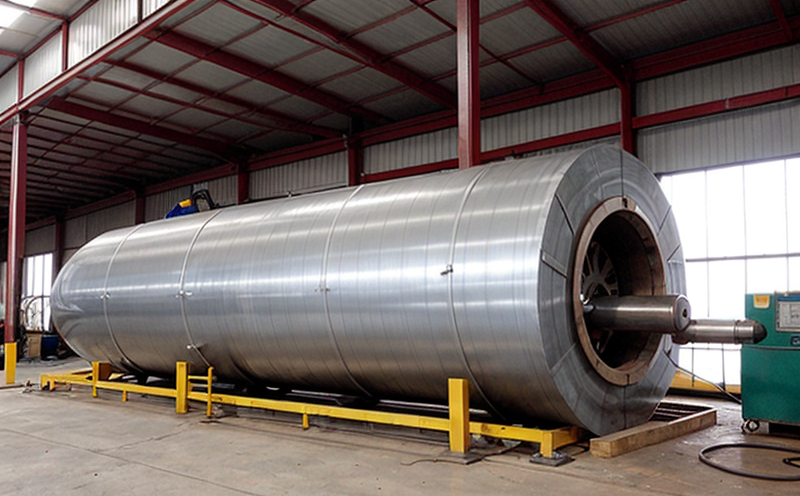Static pressure inspection
The static pressure inspection is a critical procedure within HVAC and ventilation systems that ensures optimal performance of fans and ductwork. This inspection involves measuring the static pressure at various points in the system to determine if there are any issues with fan performance, duct integrity, or air flow distribution.
Static pressure is essential for maintaining proper airflow through an HVAC system. It helps ensure that the system operates efficiently by preventing excessive resistance within the ductwork, which can lead to increased energy consumption and reduced effectiveness of the system. Static pressure is measured in units such as inches of water column (in H2O), and it indicates the force exerted on the walls of a duct or pipe.
During a static pressure inspection, technicians typically use specialized equipment like manometers to measure the pressure at different points within the HVAC system. This process helps identify any areas where air flow might be restricted or where there may be leaks in the ductwork. By identifying these issues early on, maintenance teams can prevent costly repairs and ensure that the HVAC system continues to operate efficiently.
The static pressure inspection is particularly important for large commercial buildings with complex ventilation systems. In such environments, even small changes in static pressure can have a significant impact on overall energy consumption and air quality. By regularly monitoring static pressure levels, facility managers can maintain optimal conditions while minimizing operational costs.
One key aspect of the static pressure inspection is understanding how it relates to fan performance. Fans play a crucial role in moving air through an HVAC system, but they require sufficient static pressure to function properly. If there is insufficient static pressure at the fan inlet, it can lead to reduced airflow and increased motor strain. Conversely, excessive static pressure can cause the fan to work harder than necessary, wasting energy.
In addition to its role in fan performance, static pressure also affects air distribution throughout a building's ventilation system. Properly balancing static pressures ensures that conditioned air reaches all parts of the structure evenly. This not only enhances occupant comfort but also contributes to better indoor air quality by reducing recirculation of stale or contaminated air.
When performing a static pressure inspection, it is important to follow established industry standards such as ASHRAE 52.1-2013 for determining minimum test conditions and acceptable limits based on fan type and size. Compliance with these guidelines ensures accurate measurements and reliable results.
Why It Matters
The importance of static pressure inspection cannot be overstated, especially in light of today's increasing focus on energy efficiency and sustainability in building operations. Properly maintaining the static pressure within HVAC systems helps reduce energy costs by minimizing unnecessary strain placed on fans while ensuring consistent air distribution across all areas served by the system.
- Reduces operational expenses through improved fan efficiency
- Maintains comfortable temperatures and humidity levels throughout a facility
- Promotes better indoor air quality by preventing contamination from recirculated air
- extends equipment lifespan by reducing stress on components due to improper loading conditions.
Incorporating regular static pressure inspections into routine maintenance schedules is an effective way for organizations to stay ahead of potential problems before they escalate into more serious issues that could disrupt operations or require costly repairs. This proactive approach aligns with broader goals related to sustainability and reducing environmental impact, making it a valuable tool in today’s competitive landscape.
Competitive Advantage and Market Impact
Organizations that prioritize static pressure inspection as part of their HVAC maintenance strategy can gain several advantages over competitors who do not. By demonstrating commitment to best practices and regulatory compliance, these firms enhance their reputation among clients seeking reliable solutions for maintaining efficient and sustainable facilities.
- Enhances customer trust and satisfaction by delivering high-quality service
- Improves operational efficiency leading to lower energy bills and reduced maintenance costs
- Sets industry standards for quality control and performance excellence
- Supports green initiatives aimed at reducing carbon footprints within built environments.
The market impact of implementing robust static pressure inspection protocols extends beyond individual companies; it contributes positively to overall industry trends towards greater emphasis on energy conservation and environmental responsibility. As awareness grows about the benefits associated with regular inspections, demand for services that support these efforts is likely to increase, creating opportunities for businesses specializing in this area.
Use Cases and Application Examples
| Use Case | Description |
|---|---|
| Detecting Leaks | Identifies areas where air is escaping from the ductwork, leading to increased energy consumption. |
| Ensuring Proper Fan Operation | Guarantees that fans are operating efficiently without excessive strain on motor systems. |
| Optimizing Airflow Distribution | Achieves even distribution of conditioned air across all zones served by the system, enhancing occupant comfort and satisfaction. |
| Compliance with Industry Standards | Maintains adherence to ASHRAE guidelines ensuring accurate measurements and reliable results. |
| Evaluating Equipment Performance | Assesses the overall health of HVAC equipment, identifying areas needing repair or replacement before they fail completely. |
| Promoting Sustainability Practices | Reduces unnecessary energy use and supports broader efforts aimed at minimizing environmental impact. |
| Incorporating into Routine Maintenance | Forms part of a comprehensive approach to maintaining optimal conditions in commercial buildings, schools, hospitals, etc. |
The static pressure inspection plays a pivotal role in ensuring that HVAC systems operate efficiently and effectively. By addressing issues like leaks, improper fan operation, and uneven airflow distribution early on, organizations can avoid costly repairs while promoting sustainability practices.





